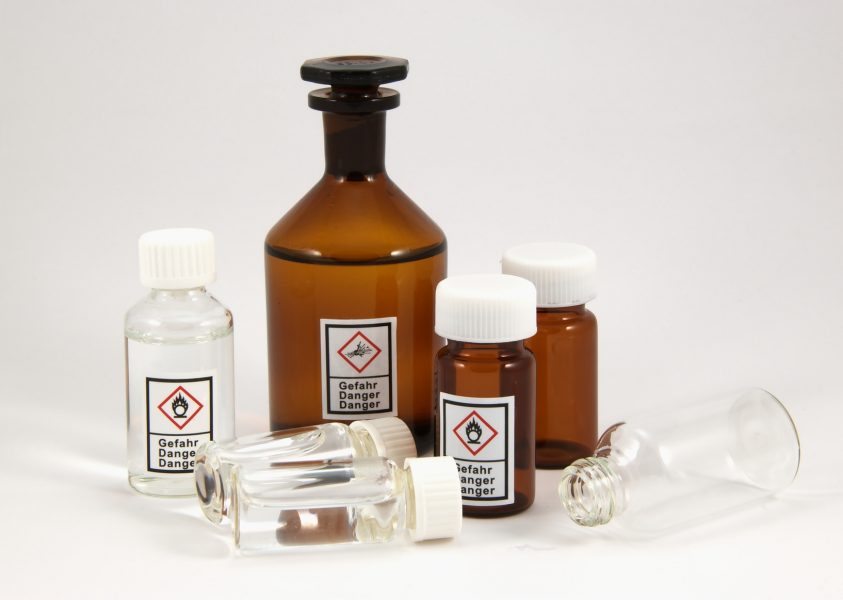Correct internal labelling of hazardous substances
Internal labelling of hazardous substances is always required for any activities involving hazardous substances. This is of particular interest where decanted moveable vessels, intermediate products, samples or wastes are concerned. In such cases, the exact determination of hazards is not always possible due to unknown components. How can internal labelling be implemented correctly despite these challenges?
Internal labelling of hazardous substances for in-house activities
For in-house operations, a complete labelling in accordance with Title III (Hazard communication in the form of labelling) of Regulation (EC) No. 1272/2008 (CLP) is not always required. The national regulations from the German Ordinance on Hazardous Substances (particularly Sections 3 – 5) continue to apply. This means that for each hazardous substance, there is a duty to provide information to any person engaged in activities with this hazardous substance. A risk assessment must therefore be provided prior to beginning the activity (Article 7 (1) of the Ordinance on Hazardous Substances). This assessment can be used as the basis for the detailedness of the labelling.
What should be included on the label
The Technical Rules for Hazardous Substances (TRGS) 201 list two variants for in-house labelling, depending on the result of the risk assessment of the activity, i.e. simplified or complete labelling.
For simplified labelling, the designation of the hazardous substance (substance or mixture) and selected pictograms will suffice. The following sequence applies, depending on the type of hazard:
- PC hazard: GHS01 before GHS02 and, where present, GHS03 before GHS04
- Health hazard: GHS08 before GHS07 and, where present, GHS06, GHS07
- Environmental hazards: GHS09 before GHS07
For complete labelling, the following details will suffice for in-house use:
- Substance name / mixture designation with details on relevant ingredients (internally used designations are possible)
- All hazard pictograms in accordance with the ranking order specified in the CLP Regulation
- Signal word
- H statements / P statements
- Additional information (EUH statements, further information)
What should be done with mixtures that are not fully known?
If the composition of mixtures cannot be fully determined or you are dealing with samples that need to be tested first, you can provide details of the known hazards. For unknown health hazards, a corresponding supplement can be provided.
TRGS 201 recommendation: “Warning – this mixture contains a substance not yet tested completely.”
The classification of wastes is described in Chapter 4.6.2 of the TRGS 201.
Sources: Regulation (EC) No. 1272/2008 (CLP), consolidated version, as of 01/01/2017
Technical Rules for Hazardous Substances (TRGS) 201, as of 04/04/2017

